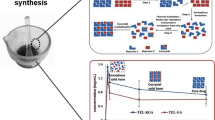Abstract
Natural polymers are promising as the carrier of matrix-based sustained release tablets but limited by their diversity in source and structure properties. Our previous studies found that chitosan (CS)- and alginate (SA)-based tablets can form self-assembled polyelectrolyte complex (PEC) film on the surface, which controlled drug release with a novel mechanism. To elucidate whether PEC-based sustained drug delivery system could weaken the influence of single-matrix material diversity on drug release behavior, taking theophylline as a drug model, the effect of SA structure properties, including viscosity, G/M ratio, SA salt type, and degree of esterification on drug release profiles, swelling, and erosion of CS-SA composite system was investigated. The results showed that the viscosity, G content, salt type, and esterification degree of SA had a remarkable influence on drug release when SA alone was used as a matrix, but little effect of these parameters on drug release was observed in CS-SA combination system. SA of low viscosity is superior in controlling drug release from CS-SA combination system. Potassium, magnesium salt of SA, and esterified SA can help form PEC of higher thickness with different swelling and erosion extent. In conclusion, this study demonstrated that drug release diversity due to SA structure difference can be well eradicated by using CS-SA combination system, which is a promising strategy to manufacture natural polymer-based products with constant quality.





Similar content being viewed by others
References
De RS, Bonferoni MC, Elviri L, Sandri G, Caramella C, Bettini R. Advances in oral controlled drug delivery: the role of drug-polymer and interpolymer non-covalent interactions. Expert Opin Drug Deliv. 2015;12(3):441.
Zhang T, Mao S, Sun W. Design and in vitro evaluation of a film-controlled dosage form self-converted from monolithic tablet in gastrointestinal environment. J Pharm Sci. 2010;99(11):4678–90. https://doi.org/10.1002/jps.22163.
Li L, Wang L, Shao Y, Ni R, Zhang T, Mao S. Drug release characteristics from chitosan-alginate matrix tablets based on the theory of self-assembled film. Int J Pharm. 2013;450(1-2):197–207. https://doi.org/10.1016/j.ijpharm.2013.04.052.
Li L, Wang L, Li J, Jiang S, Wang Y, Zhang X, et al. Insights into the mechanisms of chitosan–anionic polymers-based matrix tablets for extended drug release. Int J Pharm. 2014;476(1-2):253–65. https://doi.org/10.1016/j.ijpharm.2014.09.057.
Cong Z, Shi Y, Wang Y, Wang Y, Niu J, Chen N, et al. A novel controlled drug delivery system based on alginate hydrogel/chitosan micelle composites. Int J Biol Macromol. 2018;107(Pt A):855–64. https://doi.org/10.1016/j.ijbiomac.2017.09.065.
Conzatti G, Faucon D, Castel M, Ayadi F, Cavalie S, Tourrette A. Alginate/chitosan polyelectrolyte complexes: a comparative study of the influence of the drying step on physicochemical properties. Carbohydr Polym. 2017;172:142–51. https://doi.org/10.1016/j.carbpol.2017.05.023.
Gomez-Burgaz M, Torrado G, Torrado S. Characterization and superficial transformations on mini-matrices made of interpolymer complexes of chitosan and carboxymethylcellulose during in vitro clarithromycin release. Eur J Pharm Biopharm. 2009;73(1):130–9. https://doi.org/10.1016/j.ejpb.2009.04.004.
Zhang X, Gu X, Wang X, Wang H, Mao S. Tunable and sustained-release characteristics of venlafaxine hydrochloride from chitosan–carbomer matrix tablets based on in situ formed polyelectrolyte complex film coating. Asian J Pharm Sci. 2018;13(6):566–74. https://doi.org/10.1016/j.ajps.2018.01.004.
Mao S, Shuai X, Unger F, Wittmar M, Xie X, Kissel T. Synthesis, characterization and cytotoxicity of poly(ethylene glycol)-graft-trimethyl chitosan block copolymers. Biomaterials. 2005;26(32):6343–56. https://doi.org/10.1016/j.biomaterials.2005.03.036.
Sankalia MG, Mashru RC, Sankalia JM, Sutariya VB. Reversed chitosan-alginate polyelectrolyte complex for stability improvement of alpha-amylase: optimization and physicochemical characterization. Eur J Pharm Biopharm. 2007;65(2):215–32. https://doi.org/10.1016/j.ejpb.2006.07.014.
Liew CV, Chan LW, Ching AL, Heng PWS. Evaluation of sodium alginate as drug release modifier in matrix tablets. Int J Pharm. 2006;309(1-2):25–37. https://doi.org/10.1016/ijpharm.2005.10.040.
Sriamornsak P, Thirawong N, Korkerd K. Swelling, erosion and release behavior of alginate-based matrix tablets. Eur J Pharm Biopharm. 2007;66(3):435–50. https://doi.org/10.1016/j.ejpb.2006.12.003.
Efentakis M, Stamoylis K. A study of dimensional, swelling, and gel changes in hydrophilic and hydrophobic polymer mixtures of chitosan and their possible use as carriers for sustained release drug delivery. advances in polymer technology. Adv Polym Technol. 2011;30(2):110–21. https://doi.org/10.1002/adv.20208.
Cuppok Y, Muschert S, Marucci M, Hjaertstam J, Siepmann F, Axelsson A, et al. Drug release mechanisms from Kollicoat SR:Eudragit NE coated pellets. Int J Pharm. 2011;409(1-2):30–7. https://doi.org/10.1016/j.ijpharm.2011.02.026.
Wang YJ, Assaad E, Ispas-Szabo P, Mateescu MA, Zhu XX. NMR imaging of chitosan and carboxymethyl starch tablets: swelling and hydration of the polyelectrolyte complex. Int J Pharm. 2011;419(1–2):215–21. https://doi.org/10.1016/j.ijpharm.2011.08.008.
Shah VP, Tsong Y, Sathe P, Liu J-P. In vitro dissolution profile comparison—statistics and analysis of the similarity factor, f2. Pharm Res. 1998;15(6):889–96. https://doi.org/10.1023/a:1011976615750.
TO O, Kim JY, Ha JM, Chi SC, Rhee YS, Park CW, et al. Preparation of highly porous gastroretentive metformin tablets using a sublimation method. Eur J Pharm Biopharm. 2013;83(3):460–7. https://doi.org/10.1016/j.ejpb.2012.11.069.
Ritger PL, Peppas NA. A simple equation for description of solute release II. Fickian and anomalous release from swellable devices. J Control Release. 1987;5(1):37–42. https://doi.org/10.1016/0168-3659(87)90035-6.
Yan XL, Khor E, Lim LY. Chitosan-alginate films prepared with chitosans of different molecular weights. J Biomed Mater Res. 2001;58(4):358–65. https://doi.org/10.1002/jbm.1029.
Mao S, Zhang T, Sun W, Ren X. The depolymerization of sodium alginate by oxidative degradation. Pharm Dev Technol. 2012;17(6):763–9. https://doi.org/10.3109/10837450.2011.583927.
Maderuelo C, Zarzuelo A, Lanao JM. Critical factors in the release of drugs from sustained release hydrophilic matrices. J Control Release. 2011;154(1):2–19. https://doi.org/10.1016/j.jconrel.2011.04.002.
Author information
Authors and Affiliations
Corresponding author
Ethics declarations
Conflict of Interest
The authors declare that they have no conflict of interest
Additional information
Publisher’s Note
Springer Nature remains neutral with regard to jurisdictional claims in published maps and institutional affiliations.
Rights and permissions
About this article
Cite this article
JIN, L., Qi, H., Gu, X. et al. Effect of Sodium Alginate Type on Drug Release from Chitosan-Sodium Alginate–Based In Situ Film-Forming Tablets. AAPS PharmSciTech 21, 55 (2020). https://doi.org/10.1208/s12249-019-1549-y
Received:
Accepted:
Published:
DOI: https://doi.org/10.1208/s12249-019-1549-y




